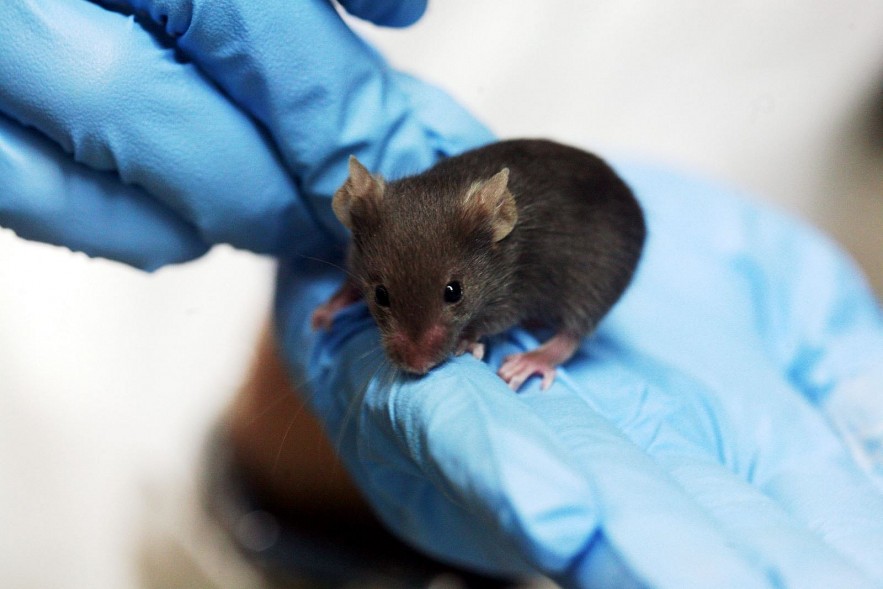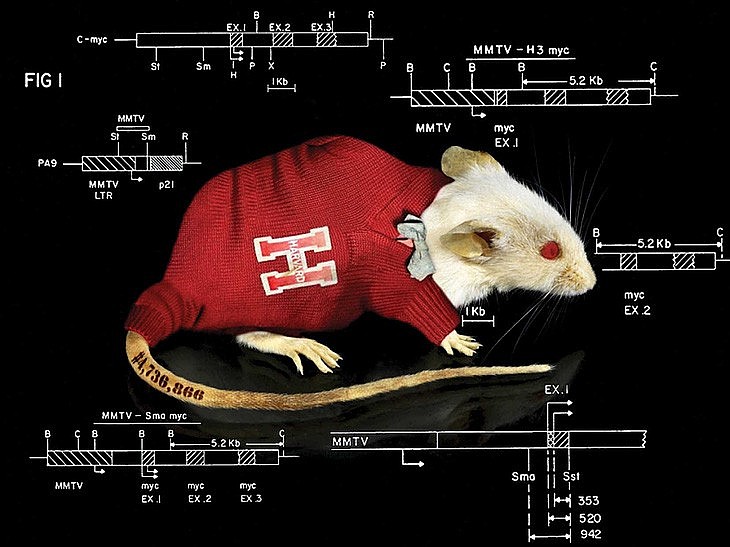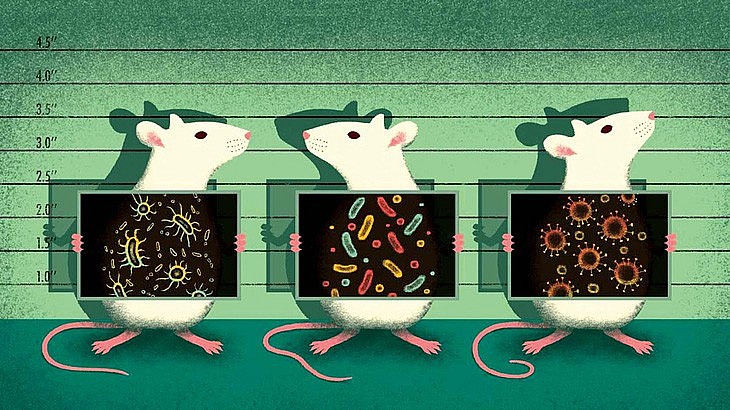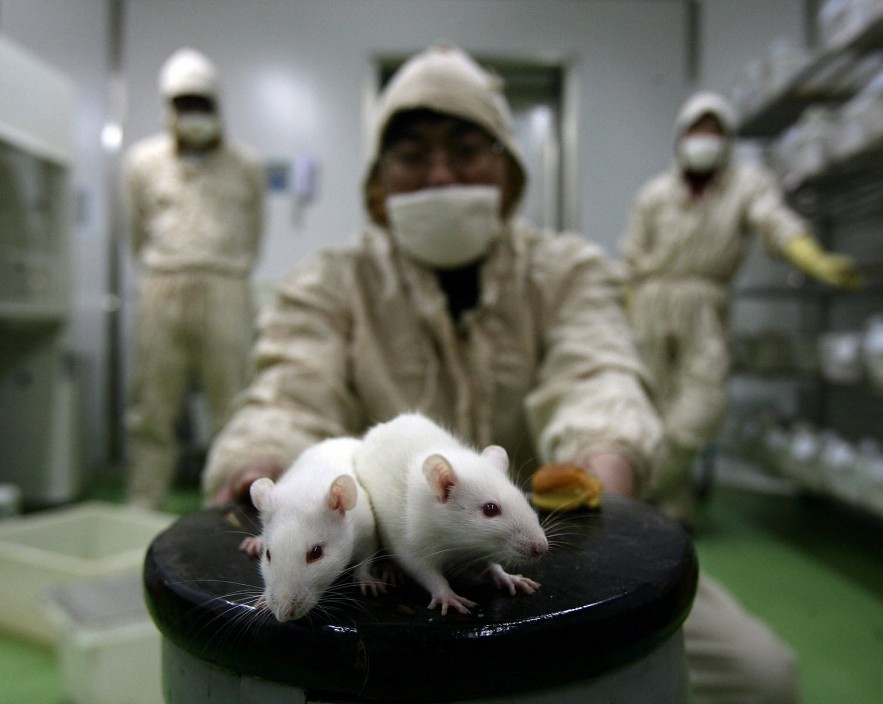Why Rats Are Used For Scientific Research Worldwide
 |
| Why Rats Are Used For Scientific Research Worldwide. Photo sciencemag |
| Contents |
Humans and mice don't look alike, but both species are mammals and are biologically very similar. Mice have been for a long time scientists’ favorite animal for their research. This article will give us the answer to the question: Why Are Rats Used For Scientific Research Worldwide?
"King" and "Queen" of the Lab
It is no coincidence that mice and rats are called "king" and "queen" in the laboratory. So how do rats rule the scientific world?
The latest report of the European Union (EU) shows that mice and rats account for 75% of the animal species used in domestic animal study, including 61% mice and 14% rats.
That’s followed by cold-blooded species (12.4), birds (5.9%) and rabbits (5%). This is equivalent to 8.6 million rats used annually in science, in the EU alone. If this rate is replicated worldwide, the number of lab rats is about 75 million per year!
A study examining trends in the use of animals in science found that nearly half of all papers in the field of neuroscience published between 2000 and 2004 used rats as the main test subject.
Data from the US National Library of Medicine shows that compared to simpler organisms such as yeast, zebrafish, fruit flies and roundworms, more scientific papers use mice as experiments - 3 times more than all the above creatures combined.
READ MORE: Top 10 Countries in the World for Scientific Research 2023/24
Why are rats used for scientific research worldwide?
 |
| Photo sciencemag |
Small and cheap
If you ask a scientist about the advantages of mice and rats that make them so popular in an experiment, the answer will be: they are small, cheap, benign and easy to intervene.
Rats are not covered by stringent animal rights laws like some larger animals such as monkeys, dogs, or cats. This helps avoid legal complications in research.
The small size of mice makes it simppler and less expensive to keep them in the laboratory than other species. A lab rat costs about 5 USD and costs only 1/10 of that price to feed every day.
A bit more expensive is the common black or gray mouse, ranging in price from 16-23 USD, often used as a base strain for genetic interventions.
Hamsters have the same price, but are used mainly in circadian rhythm studies because of their hyperactive nature and being active for 12 hours a night. The most "premium" genre is hairless mice ($73-136). The feather-like skin of this mouse makes it easy for scientists to monitor the healing process as well as perform tumor transplant experiments on mice to observe the growth of cancer cells.
In particular, all mouse breeds can be ordered online or by phone in large quantities with the promise of next day delivery.
READ MORE: Capybara -The Strangest Animal In The World
Easy to train and reproduce
Rats are easy to train and perfectly suitable for psychological experiments. The neural network of rats is so similar to humans.
In the 19th century, scientific research used a variety of different animals as hosts - from sheep, raccoons, pigeons to frogs, birds, horses. The rat family becomes the "universal key" to open all the mysterious doors of medicine, from cancer, diabetes, depression, post-traumatic stress disorder, or any disease. any disability or disorder that a person may have.
Same ancestry as human
 |
| Photo sciencemag |
Rats have the same evolutionary ancestry as humans. The mouse genome is quite similar to that of humans. Most of the mice used in medical trials are close-breed, so they have similar genomes, helping to make the results of medical experiments more consistent. The minimum requirement of laboratory mice is of the same purebred species. In addition, the small size of the mouse also makes it easy for scientists to control in the laboratory.
READ MORE: Stick Insect - The Strangest Animal In The World
How to treat rats at the lab
As the most popular laboratory animal, the mouse has helped humans to achieve a lot of scientific achievements. What this animal goes through every day in the laboratory is largely unknown.
Scientists must be trained in the ethics and code of conduct for the treatment of animals before being allowed to "work" with them in the laboratory. Rules of treatment vary by country. In Canada and Europe, scientists are subject to the supervision of a national regulatory body. In the US, they must comply with the individual regulations of each organization and the general guidelines of the National Institutes of Health.
Most universities offer training courses on how to treat rats to minimize stress and pain during the experiment. The application process is updated every year to match the reality of human understanding of rats. After a study published in the journal Nature in 2010 said that "carrying rats by their tails scares them," researchers changed their approach by luring mice through a duct or cupping their hands to bring them to the test site. Interestingly, laboratories around the world have now banned tail-carrying rats.
 |
| Photo Getty |
To conduct the experiment with mice, scientists must submit an application that explains in detail why their work needs to use animals. Applications are considered based on three principles: Limit the number of animals used, substitute animals where possible, and improve experiments to improve animal welfare. For example, the scientist must make sure that he is qualified to keep mice in the laboratory.
Although the experimental mice had different genes from wild-type mice, they still had many of the same instincts. Usually, in laboratories, rats are housed in equal numbers in cages the size of or larger than a shoebox. Although keeping the rats together for companionship satisfies the need for herd, most laboratories lack facilities to diversify habitats. Living in a cage prevents rats from engaging in natural behaviors such as digging holes, climbing or standing upright. Reducing the need for nature can cause stress in rats and affect study results.
The researchers say that it is necessary to take into account the nature of the mouse when designing the experimental environment for the best results. On the journey of using mice to understand more about humans, researching mice to cure human diseases, deliberately changing or going against the biological characteristics of mice will lead to failure or ineffectiveness. would like.
In addition, the process of transferring experiments from mice to humans was also done with great care. Along with the theoretical research, scientists also have to clinically test the new medicinal plant on two other groups of animals: the group with the body size of mice and the group with the size and characteristics of humans (such as mice, pigs, dogs or monkeys), then tested on humans.
According to U.S. drug manufacturers and researchers, only one out of every 250 compounds tested on animals has moved on to human trials. For that drug to be licensed, the whole process takes 10 to 15 years. The irony is that despite taking this long, many drugs and procedures that work in mice don't work in humans.
Whether the experiment succeeds or fails, one thing is for sure: The mouse will be "end of life" after the experiment is done. An estimated 100 million mice are "sacrifice" each year in US laboratories for scientific research purposes.
 Amazing Facts About Black-Mained Lion Amazing Facts About Black-Mained Lion There are strong, huge and wonderful predators in the wild, and black-maned lions are one of them. They have been considered extremely beautiful and attractive ... |
 Top 10 Most Expensive Animals In The World Today Top 10 Most Expensive Animals In The World Today Animals are human’s friends so many of us are ready to spend a large amount of money buying animals. ... |
 Top 10 Most Beautiful Animals in the World Top 10 Most Beautiful Animals in the World All animals living on earth are beautiful. The diversity on our planet is practically endless with different sizes, shapes, characteristics and colours. Here is 10 ... |
























